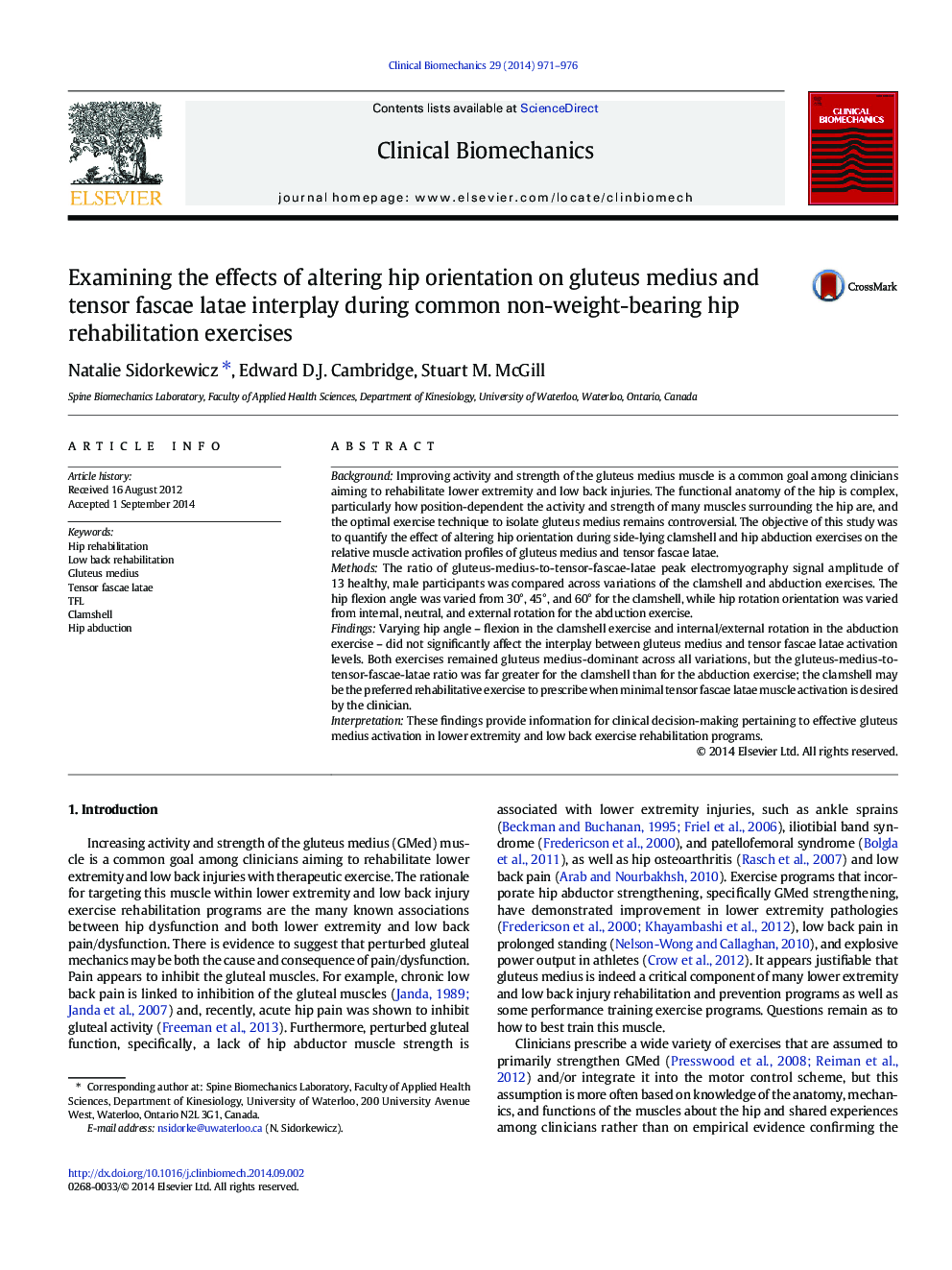| Article ID | Journal | Published Year | Pages | File Type |
|---|---|---|---|---|
| 4050295 | Clinical Biomechanics | 2014 | 6 Pages |
•Regardless of condition, GMed activity dominated TFL activity in CLAM and ABD.•GMed-to-TFL ratio was far greater for CLAM than for ABD.•CLAM is preferred over ABD when minimal TFL activity is desired by the clinician.
BackgroundImproving activity and strength of the gluteus medius muscle is a common goal among clinicians aiming to rehabilitate lower extremity and low back injuries. The functional anatomy of the hip is complex, particularly how position-dependent the activity and strength of many muscles surrounding the hip are, and the optimal exercise technique to isolate gluteus medius remains controversial. The objective of this study was to quantify the effect of altering hip orientation during side-lying clamshell and hip abduction exercises on the relative muscle activation profiles of gluteus medius and tensor fascae latae.MethodsThe ratio of gluteus-medius-to-tensor-fascae-latae peak electromyography signal amplitude of 13 healthy, male participants was compared across variations of the clamshell and abduction exercises. The hip flexion angle was varied from 30°, 45°, and 60° for the clamshell, while hip rotation orientation was varied from internal, neutral, and external rotation for the abduction exercise.FindingsVarying hip angle – flexion in the clamshell exercise and internal/external rotation in the abduction exercise – did not significantly affect the interplay between gluteus medius and tensor fascae latae activation levels. Both exercises remained gluteus medius-dominant across all variations, but the gluteus-medius-to-tensor-fascae-latae ratio was far greater for the clamshell than for the abduction exercise; the clamshell may be the preferred rehabilitative exercise to prescribe when minimal tensor fascae latae muscle activation is desired by the clinician.InterpretationThese findings provide information for clinical decision-making pertaining to effective gluteus medius activation in lower extremity and low back exercise rehabilitation programs.
